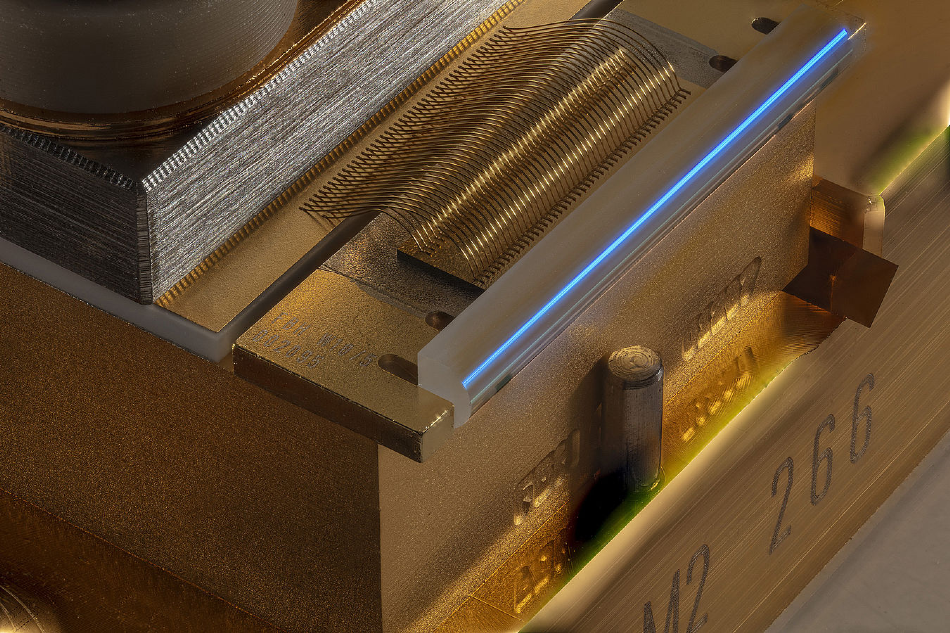Jul 17 2020
MERLIN, the Franco-German satellite, is scheduled for launch into space in 2025 to quantify the concentration of methane in the Earth’s atmosphere—a milestone in climatic studies.
 Laser diode bench from the Ferdinand-Braun-Institut before mounting into the pump module. Image Credit: © FBH/schurian.com.
Laser diode bench from the Ferdinand-Braun-Institut before mounting into the pump module. Image Credit: © FBH/schurian.com.
The Ferdinand-Braun-Institut (FBH) in Berlin supplies crucial components of the LiDAR measurement system and has now offered the necessary laser diode benches (LDBs) to the project partner.
The goal of the MERLIN mission is to gain better insights into the impact of the greenhouse gas methane on global warming. Natural and anthropogenic methane emissions are measured by a radar-like laser system on the satellite: The Integrated Path Differential Absorption (IPDA)-LiDAR sends laser light to the Earth’s surface and analyzes the backscattered signal.
To this end, the FBH has designed and developed highly reliable LDBs for the MERLIN climate satellite. Of these space-qualified LDBs, six have now been built-in into three pump modules from the Fraunhofer Institute for Laser Technology (ILT) and offered to the project partner ready for use.
The modules produce the pump energy required for the oscillator of a Nd:YAG solid-state laser and are incorporated into the LiDAR system by the ILT. On the other hand, the solid-state laser acts as the light source for a tunable optical parametric oscillator (OPO) that produces double pulses with varying wavelengths in the infrared range around 1.6 μm.
Methane strongly absorbs one of these pulses, but not the other. Therefore, it would be feasible to determine the methane content from the ratio of intensities of the backscattered light.
Robust, Space-Qualified Diode Laser Technology
The LDBs delivered by the FBH form the centerpiece of the pump modules. Each LDB produces a pump power of over 60 W in the form of double pulses, with a pulse width of 150 μs and a repetition rate of 20 Hz.
Laser diode mini-bars form a crucial component of the LDB and guarantee efficient light generation. The fast axis collimation lenses in-built into the LDB enable the laser beam to be coupled with an optical fiber with minimal loss.
Of these LDBs, two are combined into each module and offer a joint pump power of 120 W. A comprehensive test of the diode laser, fast-axis collimation, LDB technology was first performed at FBH and was confirmed to be ideal for space applications.
Then, the European Space Research and Technology Center (ESTEC) located in the Netherlands qualified the LDBs. Results of the comprehensive life cycle tests carried out by ESTEC revealed that degradation of power occurs only minimally even after a longer operation time of over four billion pulses.
Hence, the scientific team believes that the MERLIN quantification system will operate without any failures even under space conditions. Thanks to several years of extensive knowledge gathered at the FBH for developing space-qualified diode lasers, it has been possible to successfully deliver LDBs for the MERLIN mission.
Thus, FBH technology will contribute to the detailed analysis of crucial and the so far less-known sources of global warming on the climate satellite—a landmark in European climate research.
Within the framework of the MERLIN satellite project, which is a collaboration between DLR RfM and CNES, the Fraunhofer ILT is creating the beam source—the “Laser Optical Assembly”—of the laser transmitter under contract to Airbus DS GmbH.
The work is being performed on behalf of the Federal Ministry of Economics and Energy BMWi under grant number 50EP1601.